The cuisine of Uttar Pradesh, often referred to as Awadhi cuisine, is celebrated for its rich and diverse flavors influenced by Mughal and Nawabi culinary traditions. Known for its elaborate preparation methods and intricate spice blends, it features a wide array of delectable dishes ranging from kebabs and biryanis to rich gravies and decadent desserts. Key ingredients such as saffron, cardamom, and rose water are used generously, creating dishes with a unique blend of sweet and savory flavors. Uttar Pradesh cuisine reflects the region's cultural heritage and royal history, making it a delight for food enthusiasts seeking authentic Indian cuisine.
Puri
-1712055717.jpg)
Puri, or poori, is a popular type of deep-fried bread originating from the Indian subcontinent. Made from unleavened whole-wheat flour, puris are commonly enjoyed for breakfast or snacks. They also hold ceremonial significance, often served at special functions or Hindu rituals as prasadam, along with other vegetarian dishes. Variants of puris exist, with one notable version called bedvi, particularly favored in the Northern Indian state of Uttar Pradesh. Bedvi is a saltier and stiffer variation of the traditional puri and is frequently stuffed with lentils, adding depth of flavor and texture. Whether enjoyed plain or stuffed, puris remain a beloved culinary delight, offering a delightful combination of crispiness on the outside and softness on the inside, making them a cherished part of Indian cuisine.
Gulab Jamun
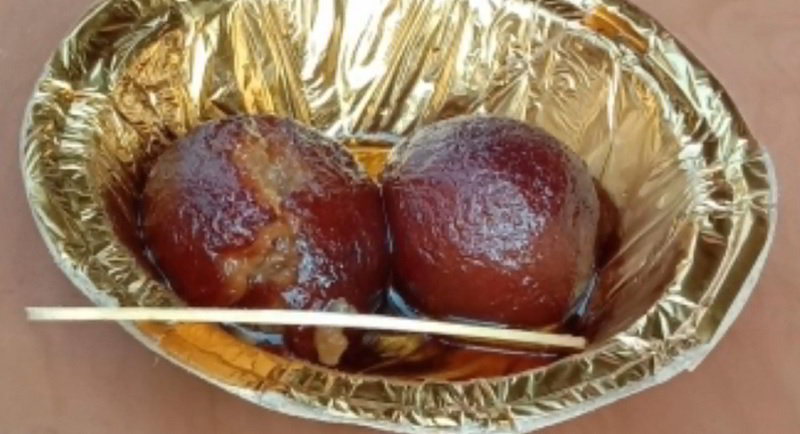
Gulab jamun, a beloved dessert originating from the Indian subcontinent, is a sweet confectionery cherished for its irresistible taste and rich cultural significance. Traditionally crafted from khoya, milk reduced to a soft dough consistency, modern recipes often incorporate dried or powdered milk. These delectable spheres are then fried to a golden perfection and drenched in a luscious sugar syrup infused with cardamom and rose water, giving them their characteristic floral aroma and sweet taste.
Often adorned with dried nuts like almonds and cashews for added texture and flavor, gulab jamun holds a special place in celebrations and gatherings. Whether enjoyed at festivals, birthdays, or joyous occasions like weddings, Eid, or Diwali, gulab jamun symbolizes warmth, sweetness, and the spirit of togetherness. With various types and regional variations, this iconic dessert continues to captivate dessert enthusiasts worldwide with its indulgent taste and cultural significance.
Roti
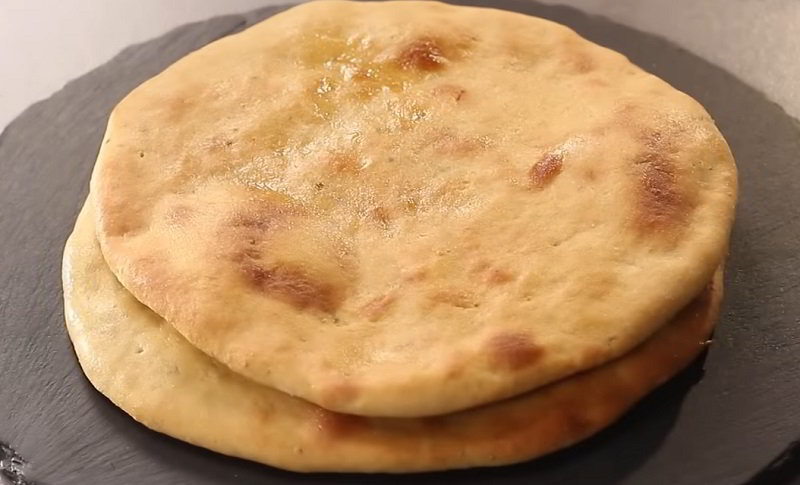
Roti, a staple food in the Indian subcontinent, is a round, unleavened flatbread enjoyed across South Asia, the Caribbean, Southeast Asia, and Southeast Africa. Crafted from stoneground whole wheat flour (gehu ka atta,) and water, roti dough is kneaded until smooth and pliable. After portioning the dough, it's shaped into thin circles and cooked on a hot griddle or tawa until they turn golden brown and puff up.
Roti's versatility makes it a beloved accompaniment to a wide range of dishes, from savory curries to sweet spreads. Its simplicity and wholesome flavor have made it a go-to choice for everyday meals and special occasions alike. Whether served plain or with ghee or butter, roti's soft texture and mild taste complement a variety of flavors, making it a cherished part of diverse culinary traditions throughout the world.
Laddu
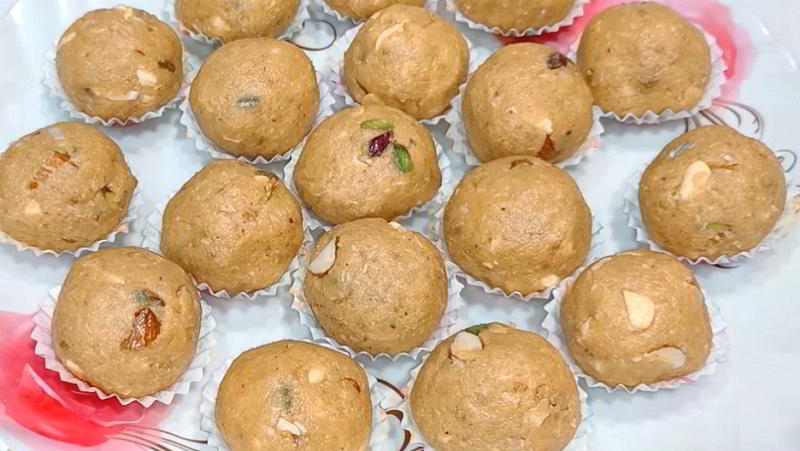
Laddu, or laddoo, is a spherical sweet originating from the Indian subcontinent, crafted from a blend of diverse ingredients bound together with sugar syrup or jaggery. Regarded as one of the oldest and most widespread Indian sweets, laddus hold a central place in culinary traditions.
These delectable treats are a staple during celebrations and religious festivals, particularly those honoring the Hindu deity Ganesha. With a myriad of variations, including coconut laddu, besan laddu, motichoor laddu, shahi laddu, and thaggu ke laddu, they cater to diverse palates and preferences.
The process of making laddus involves skillfully shaping the mixture into round balls, a task often passed down through generations. Whether enjoyed as a symbol of festivity or savored as a daily indulgence, laddus remain an integral part of Indian culinary heritage, cherished for their sweetness and cultural significance.
Chaat

Chaat is a beloved family of savory snacks tracing its origins to India, particularly Uttar Pradesh, where it emerged as a street food sensation. This delightful culinary genre has garnered widespread acclaim and is now enjoyed across South Asia, including Nepal, Pakistan, and Bangladesh.
Characterized by its vibrant flavors and diverse textures, chaat is often served as an hors d'oeuvre or relished from roadside stalls and food carts lining bustling streets. The assortment of chaat variations is vast, ranging from tangy and spicy to sweet and savory, catering to a spectrum of taste preferences.
Common ingredients found in chaat include crispy fried dough, potatoes, chickpeas, yogurt, chutneys, and an array of spices, all layered together to create a symphony of flavors. Whether enjoyed as a quick snack on the go or savored during leisurely gatherings, chaat continues to captivate food enthusiasts with its irresistible charm and culinary creativity.
Paratha
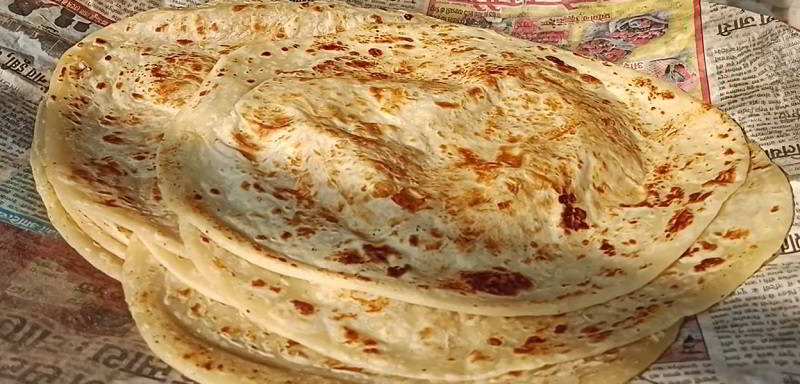
Paratha, a cherished flatbread native to the Indian subcontinent, derives its name from the amalgamation of "parat" and "atta," signifying layers of cooked dough. Renowned for its versatility and delightful taste, parathas are among the most beloved unleavened flatbreads in the region.
Prepared by baking or cooking whole-wheat dough on a tava, parathas are then shallow-fried to achieve a golden hue. Unlike chapatis or rotis, plain parathas boast a thicker and more substantial texture, owing to the layering process involving coating with ghee or oil and folding repeatedly, reminiscent of puff pastry or laminated dough techniques.
Stuffed parathas, another popular variant, offer a plethora of flavors and ingredients, reflecting diverse regional influences. From savory fillings like spiced potatoes and paneer to sweet options like jaggery and nuts, stuffed parathas cater to a spectrum of culinary preferences, making them a cherished staple in Indian cuisine.
Korma
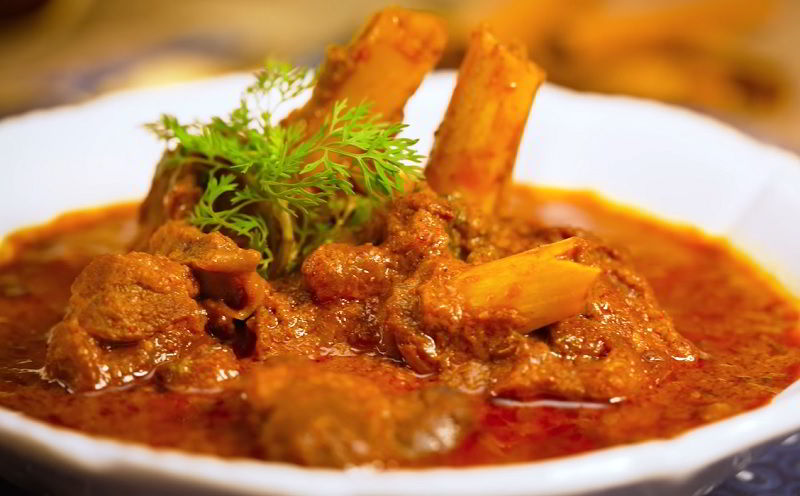
Korma, a flavorful dish originating in the Indian subcontinent, is renowned for its rich and aromatic gravy. With roots deeply embedded in Mughlai cuisine, korma showcases a harmonious blend of meat or vegetables, yogurt, spices, and stock or water.
To achieve its distinctive taste and texture, korma follows a meticulous cooking process. The meat or vegetables are initially seared over high heat, often in ghee, before undergoing a slow and gentle braising process. This method ensures tender and succulent results, with the flavors intensifying over time.
Traditionally, korma is cooked using moist heat, with the pot sometimes sealed with dough during the final stages of cooking, a technique known as dum or dampokhtak. This allows the ingredients to simmer in their own juices, enhancing the depth of flavor and creating a luscious sauce that coats each bite. Korma stands as a testament to the culinary prowess of the Indian subcontinent, delighting palates with its exquisite taste and aromatic profile.
Raita
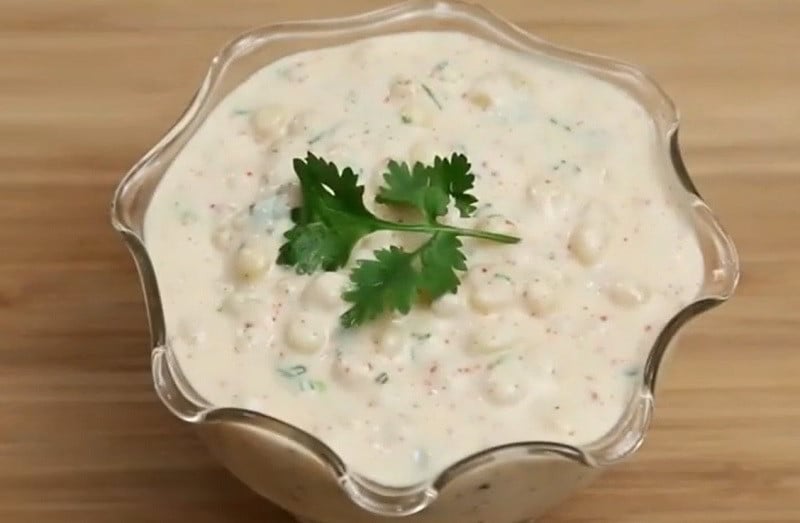
Raita, a quintessential side dish in Indian cuisine, combines creamy yogurt with a variety of raw or cooked vegetables, fruits, or crispy boondi (chickpea flour droplets). This versatile accompaniment offers a refreshing contrast to spicy curries and kebabs, providing a cooling effect on the palate.
Comparable to a side dish or dip in Western cuisine, raita is more than just a condiment. It complements Indian meals, often served alongside flatbreads, chutneys, and pickles. The yogurt base is infused with aromatic spices like coriander, roasted cumin seeds, mint, and chaat masala, adding layers of flavor and depth to the dish.
Raita's appeal lies in its ability to balance and enhance the overall dining experience, offering a harmonious blend of creamy texture and vibrant flavors. Whether enjoyed as a dip or a side, raita adds a delightful touch to any Indian meal, making it a beloved staple in households and restaurants alike.
Kheer
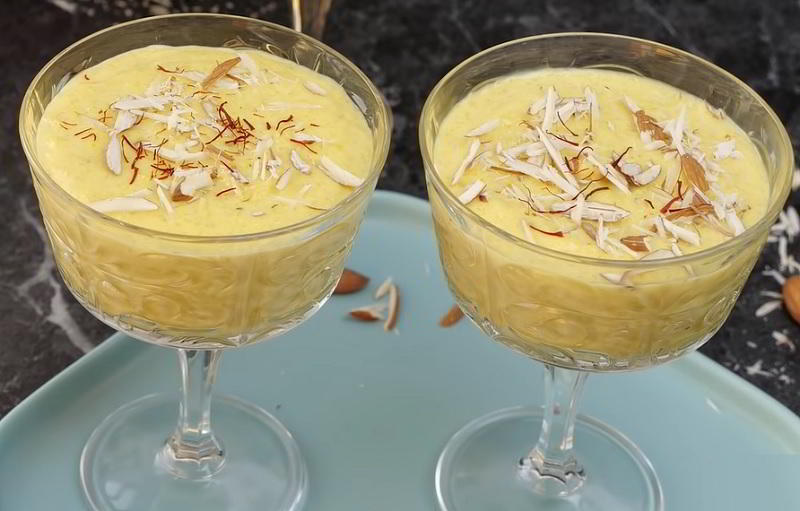
Kheer, also known as payasam or payesh, is a beloved pudding/porridge enjoyed across the Indian subcontinent. This creamy delicacy is typically crafted by simmering milk with sugar or jaggery and rice, creating a rich and indulgent treat. Its allure lies in its versatility, as it can be flavored with an array of ingredients such as dried fruits, nuts, aromatic cardamom, and luxurious saffron.
While rice is the traditional choice for kheer, variations abound. Some recipes incorporate cracked wheat, sevai (vermicelli), or sabudana (tapioca), each offering a unique texture and flavor profile. In Southern India, kheer is known as payasam and is prepared in various ways, with popular versions featuring rice or semiya (vermicelli).
Whether served warm or chilled, kheer captivates the senses with its creamy consistency and aromatic blend of spices. It is a staple dessert at festive occasions, religious celebrations, and family gatherings, cherished for its comforting sweetness and cultural significance.
Palak Paneer
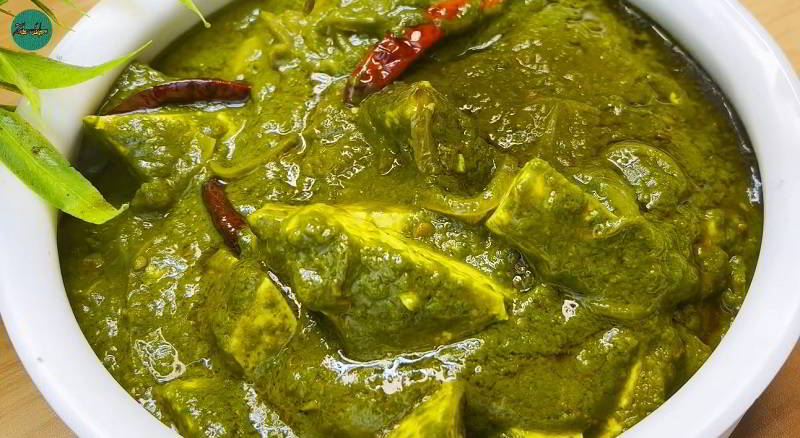
Palak paneer, also known as palak chhena, is a quintessential Indian dish renowned for its vibrant flavors and nutritious ingredients. This culinary masterpiece features tender cubes of chhena or paneer enveloped in a velvety puree of spinach, known as palak. While the terms palak chhena and saag chhena are sometimes used interchangeably, saag chhena incorporates additional green leafy vegetables like mustard greens, distinguishing it from the traditional palak paneer.
To prepare palak paneer, spinach is boiled and pureed before being combined with sautéed tomatoes and onions. Grilled paneer cubes are then added to the mixture, infusing the dish with rich texture and protein. The palak paneer is further enhanced with a medley of aromatic spices, including ginger, garlic, garam masala, turmeric, chili powder, and cumin, resulting in a symphony of flavors that tantalize the taste buds.
Palak paneer holds a special place in Indian cuisine, often gracing the tables of dhaba restaurants and homes alike, where it is savored for its comforting warmth and wholesome goodness.
Kachori
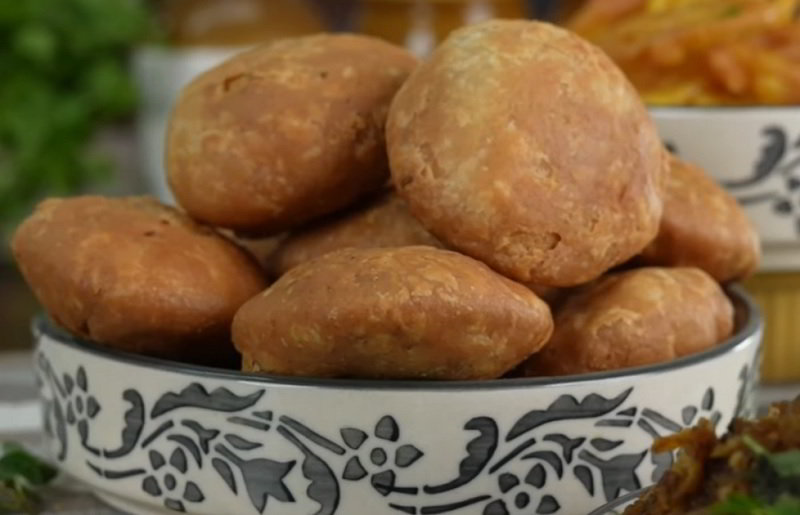
Kachori, a beloved Indian delicacy, is a delectable deep-fried snack celebrated for its enticing blend of sweet and spicy flavors. Originating in India, kachoris have gained popularity beyond its borders, becoming a staple in regions with significant Indian and South Asian diasporas. These crispy treats come in various enticing variations, each offering a unique culinary experience.
Popular variants of kachori include Raj Kachori, renowned for its indulgent fillings and vibrant toppings, Pyaaj Kachori, which highlights the piquant taste of onions, and Dal Kachori, featuring a savory filling made from spiced lentils. Each variety showcases the creativity and diversity of Indian cuisine, offering a tantalizing array of flavors and textures to satisfy every palate.
Whether enjoyed as a quick snack on the go or served as a delightful appetizer at gatherings and festivities, kachoris hold a special place in the hearts and taste buds of food enthusiasts worldwide, promising an unforgettable culinary experience with every crispy bite.
Petha
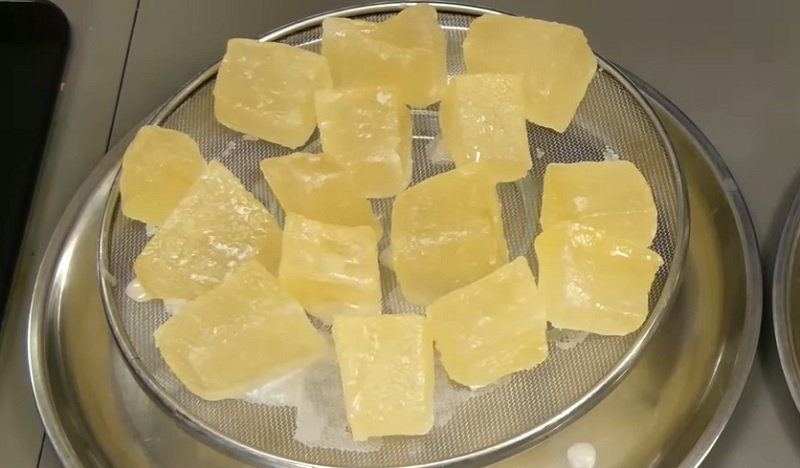
Petha, a delicacy hailing from the Indian subcontinent, is a translucent soft candy crafted from the versatile ash gourd, also known as white pumpkin. The process of making petha involves slicing the ash gourd into bite-sized pieces, which are then cured in a lime solution to achieve the desired texture. After boiling the gourd pieces until soft, they are immersed in a flavorful syrup, resulting in a candy with a sugar-crisp exterior and a chewy, crystalline interior.
Agra, renowned for its confectionery, offers an array of inventive petha varieties, boasting vibrant colors and flavors ranging from paan to rose. The city's candy counters showcase the creativity and artistry behind this beloved treat, captivating locals and tourists alike.
As demand for petha continues to grow, so does its innovation. Today, numerous flavored variants such as kesar petha and angoori petha are available, each offering a unique and delightful taste experience. Some variations incorporate coconut, nuts, or kewda essence, further enhancing the diversity and allure of this traditional Indian sweet.
Aloo Gobi
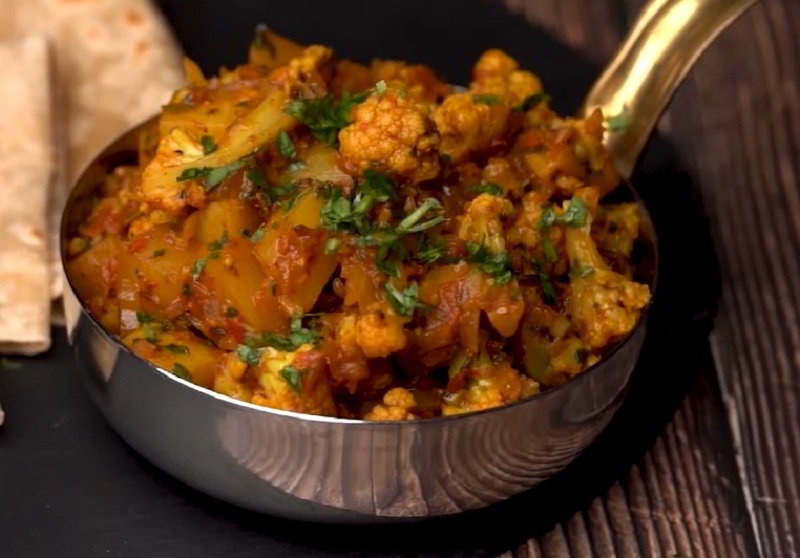
Aloo Gobi, also known as alu gobi or aloo gobhi, is a beloved vegetarian dish originating from the Indian subcontinent. This flavorful dish features a delightful combination of cauliflower (gobhi), potatoes (aloo), and an array of aromatic Indian spices. Commonly found in Indian cuisine, Aloo Gobi boasts a vibrant yellowish hue attributed to the use of turmeric, with occasional additions of black cumin and curry leaves for extra depth of flavor.
In addition to the key ingredients, Aloo Gobi often incorporates coriander stalks, tomato, garlic, ginger, onion, asafoetida, peas, black pepper, and cumin, resulting in a rich and aromatic dish bursting with complexity. Variations of Aloo Gobi abound, each offering its own unique twist on this classic recipe. Whether enjoyed as a comforting home-cooked meal or savored at restaurants, Aloo Gobi continues to captivate taste buds and remains a cherished staple in Indian culinary traditions.
Chole Bhature
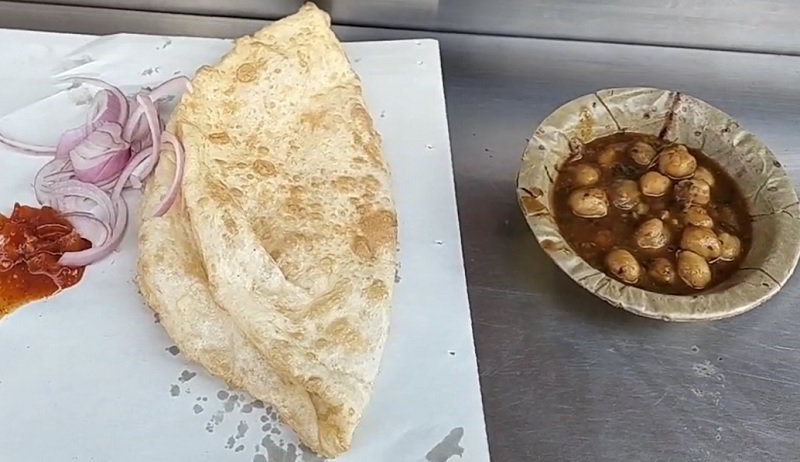
Chole bhature is a beloved food dish hailing from the northern regions of the Indian subcontinent. This delectable delicacy consists of chana masala, a spicy preparation of white chickpeas, paired with bhatura or puri, deep-fried bread made from maida (refined wheat flour).
Typically enjoyed as a hearty breakfast option, chole bhature is often relished alongside a refreshing glass of lassi. It also holds a prominent place as street food, offering a satisfying meal on-the-go or as a delightful indulgence during leisurely outings.
To enhance its flavors, chole bhature is commonly served with accompaniments such as finely chopped onions, pickled carrots, vibrant green chutney, or achaar (pickles). Its enticing aroma and rich taste make it a favorite among food enthusiasts, whether enjoyed as a quick snack or as part of a wholesome meal, adding a touch of culinary delight to any dining experience.
Peda
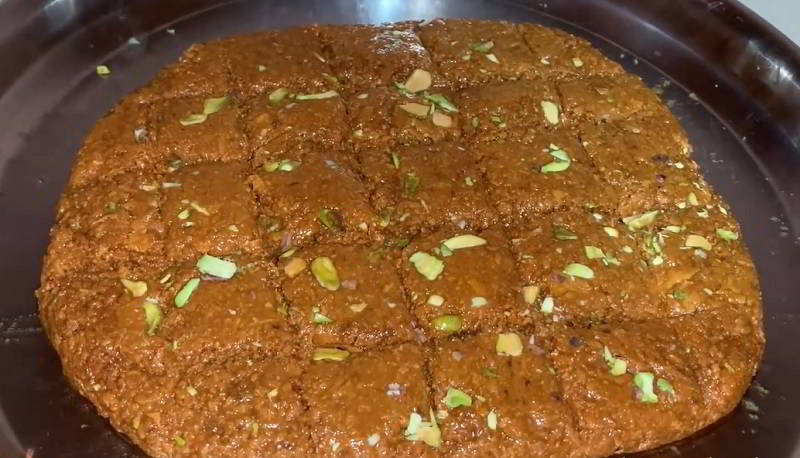
Peda, also known as Pera, is a cherished Indian sweet with its roots tracing back to the city of Mathura in Uttar Pradesh, India. This delectable confection is traditionally crafted into thick, semi-soft round balls, boasting a rich blend of khoa, sugar, and aromatic flavorings such as cardamom seeds.
Characterized by its distinctive brown hue, peda delights the palate with its indulgent texture and harmonious sweetness. Its preparation involves meticulously simmering milk until it reduces to a thick consistency, imparting a creamy richness to the final product.
Peda holds a special place in Indian culinary culture, often enjoyed during festivals, celebrations, and auspicious occasions. Its popularity extends beyond Mathura, captivating sweet lovers across the Indian subcontinent and beyond. With its timeless appeal and irresistible taste, peda continues to enchant generations, embodying the essence of traditional Indian sweets and the culinary heritage of Uttar Pradesh.
Sharbat
-1712122540.jpg)
Sharbat is a refreshing beverage crafted from fruit or delicate flower petals, offering a sweet and aromatic indulgence. Typically served chilled, this cordial is enjoyed for its rejuvenating qualities and delightful taste. Sharbat can be savored in concentrated form, enjoyed with a spoon, or diluted with water to create a thirst-quenching drink perfect for hot days.
The versatility of sharbat is showcased through a variety of flavors derived from ingredients such as basil seeds, rose water, sandalwood, bael, hibiscus, and a medley of fruits including grape, falsa, lemon, orange, mango, and pineapple. Each sip offers a burst of natural flavors, from the floral essence of rose petals to the tangy zest of citrus fruits.
Whether enjoyed as a revitalizing treat on its own or paired with traditional delicacies, sharbat remains a beloved part of culinary traditions across regions, offering a taste of pure refreshment and the essence of nature's bounty.
Gujia
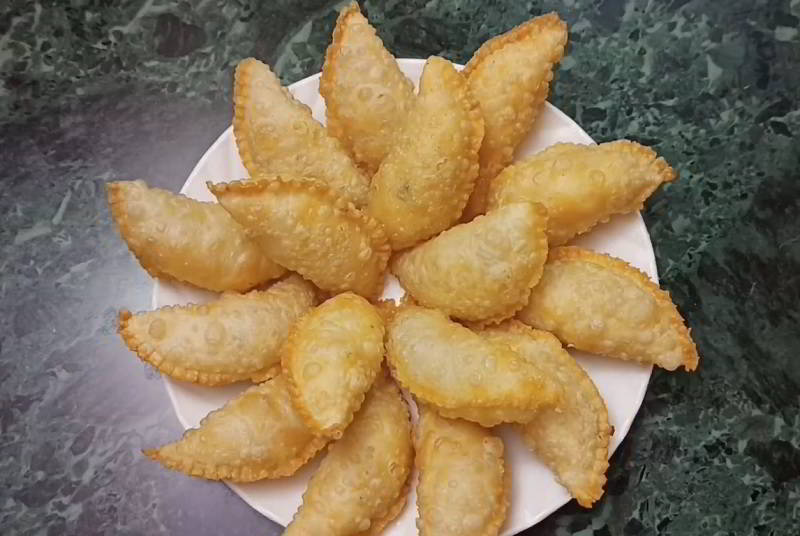
Gujhia is a delectable sweet treat deeply entrenched in the culinary traditions of the Indian subcontinent. This pastry delight, cherished for its rich flavor and crispy texture, is a beloved dessert across various regions. Crafted from either suji or maida dough, Gujhia encases a luscious filling of sweetened khoa and an assortment of dried fruits, offering a delightful burst of flavors with every bite.
Traditionally fried in ghee to perfection, Gujhias are popularly enjoyed during festive occasions like Holi and Diwali in regions such as Uttar Pradesh, Rajasthan, Gujarat, and Bihar. In Bihar, a variant known as Pedakiya holds a special place, especially during Chhath festivities. Whether relished as a festive delicacy or enjoyed as a sweet indulgence any time of the year, Gujhia stands as a testament to the culinary creativity and cultural richness of the Indian subcontinent.
Aloo Paratha
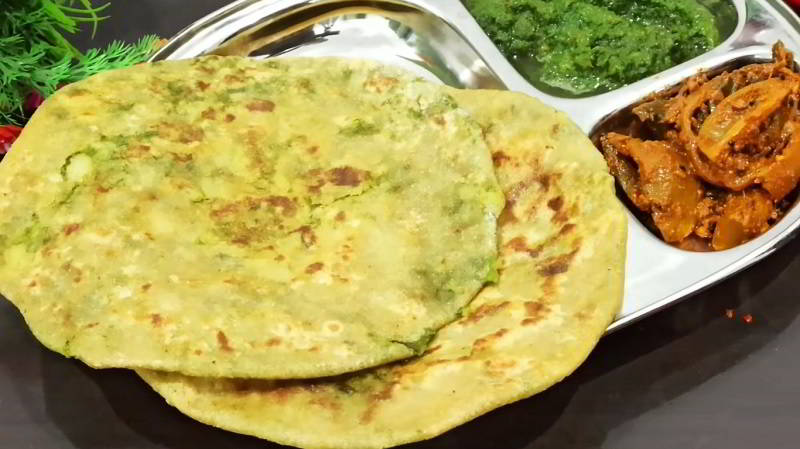
Aloo Paratha, a beloved dish hailing from the Indian subcontinent, is a quintessential breakfast staple cherished for its comforting flavors and hearty appeal. This delectable paratha variant features a delightful stuffing of mashed potatoes seasoned with aromatic spices such as amchur and garam masala, encased within unleavened dough.
Prepared by rolling out the dough and generously filling it with the savory potato mixture, Aloo Paratha is then cooked on a hot tawa until golden brown and crisp, often enhanced with a drizzle of butter or ghee for added richness.
Traditionally served with accompaniments like butter, chutney, curd, or Indian pickles, Aloo Paratha offers a satisfying and flavorful start to the day. Its popularity transcends regional boundaries, making it a beloved dish enjoyed by breakfast enthusiasts across the Indian subcontinent and beyond, appreciated for its simplicity, versatility, and delightful taste.
Tunde Ke Kabab
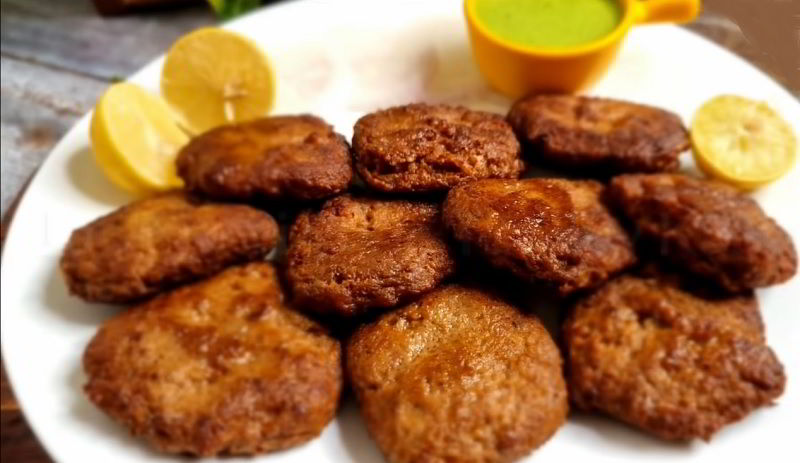
Tunday Ke Kabab, also recognized as Galouti kebab, stands as an iconic culinary masterpiece deeply rooted in the gastronomic heritage of Lucknow, India. This delectable dish, a cornerstone of Awadhi cuisine, is renowned for its rich flavors and melt-in-your-mouth texture.
Crafted from finely minced buffalo meat infused with a myriad of aromatic spices, Tunday Ke Kabab is a testament to culinary ingenuity, said to incorporate an impressive array of 160 different spices. The meticulously balanced blend of ingredients includes grated ginger, crushed garlic, plain yogurt, garam masala, melted ghee, small onions, vinegar, dried mint, ground cardamom, rose water, sugar, powdered cloves, saffron, and lime.
Prepared with utmost precision and skill, the minced meat mixture is expertly shaped into small patties before being grilled to perfection, yielding tender and flavorful kebabs that captivate the palate with each bite. Tunday Ke Kabab holds a revered status in the culinary landscape of Lucknow, celebrated for its unparalleled taste and heritage.
Aloo Tikki
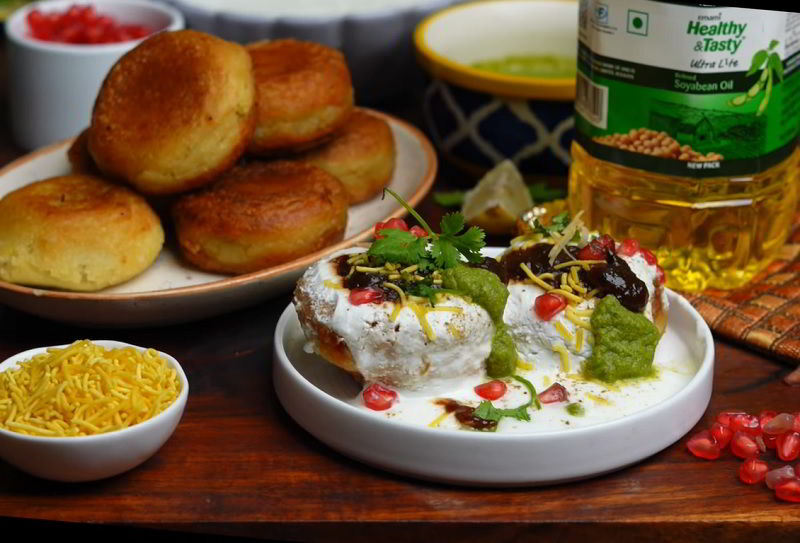
Aloo tikki, also referred to as aloo ki tikkia or alu tikki, is a beloved snack originating from the vibrant culinary landscape of the Indian subcontinent. Literally translating to "potato cutlet" in Hindi-Urdu, this delectable treat features a flavorful mixture of mashed potatoes seasoned with aromatic spices.
Prepared by shaping the potato mixture into small patties, aloo tikki is then shallow-fried until golden and crispy, offering a delightful contrast of textures. Served piping hot, it is accompanied by a medley of condiments, including saunth (tamarind), coriander-mint chutney, and sometimes dahi (yogurt) or chickpeas, adding layers of tangy and savory flavors.
Aloo tikki is a vegetarian delight, reminiscent of the hash brown in Western cuisine but distinguished by its unique Indian spices and accompaniments. Whether enjoyed as a street food snack or as a tantalizing appetizer at home, aloo tikki holds a cherished place in the hearts and palates of food enthusiasts across the Indian subcontinent and beyond.
Malpua
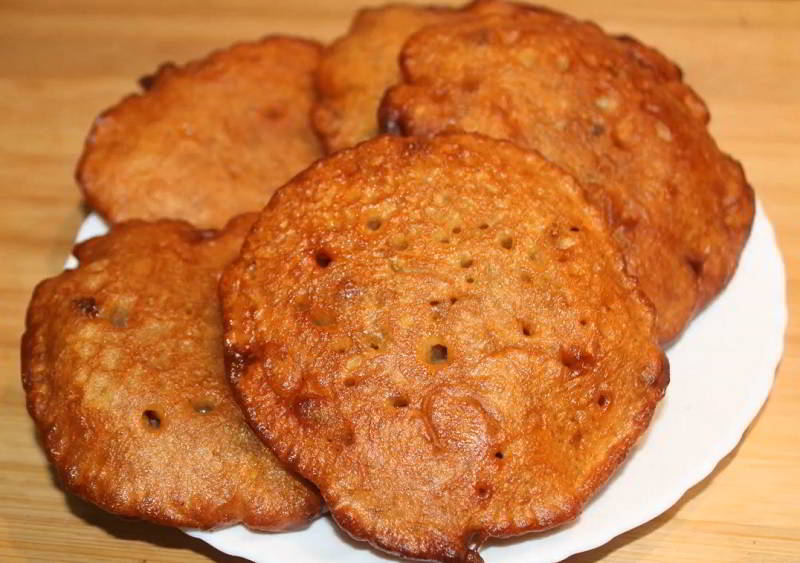
Malpua, sometimes shortened to pua, is a delightful sweet treat enjoyed during breakfast, tea time, or as a dessert across the Indian subcontinent. The batter for malpua varies regionally, with some recipes incorporating ripe bananas or coconut in addition to flour, water, or milk, and fragrant cardamom for seasoning. These batter-laden fritters are then deep-fried until golden and crispy.
In Odisha, malpua fritters are further enhanced by dipping them in syrup post-frying, while the Bihari version includes sugar in the batter itself. In northern India, especially in Uttar Pradesh, Bihar, and Rajasthan, malpua variations omit fruit but may include ingredients like refined flour, semolina, milk, and yogurt.
After resting for a few hours, the batter is spooned into hot oil, creating bubbling pancakes with crisp edges. These pancakes are then bathed in a thick sugar syrup, adding a luscious sweetness to each bite. Malpua holds special significance during Hindu festivals like Holi, where its indulgent flavors and textures are celebrated with joy and reverence.
Shami Kebab
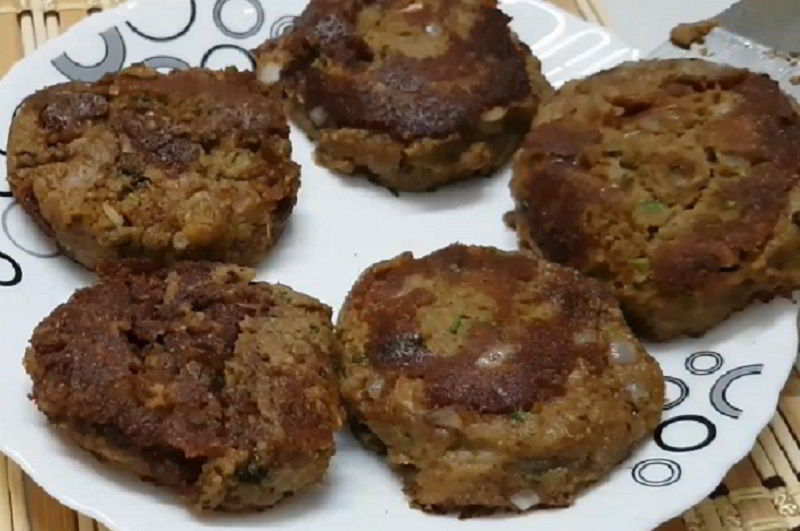
Shami kabab, also known as shaami kabab, is a beloved variety of kebab originating from the Indian subcontinent. These delectable kababs are crafted from a mixture of minced meat, typically beef, lamb, or mutton, although a chicken version is also popular. The meat is combined with ground chickpeas, egg as a binding agent, and an array of aromatic spices.
Shami kebabs are cherished as a snack or appetizer, boasting a tantalizing blend of flavors and textures. They are often adorned with a splash of lemon juice and served alongside thinly sliced raw onions for added zest. Accompanying these kababs is often a refreshing chutney crafted from mint or coriander, enhancing their savory profile.
During the Islamic festival of Eid, shami kababs hold special significance and are commonly served alongside sheer khurma, enriching the festive celebrations with their savory goodness. Whether enjoyed as a casual snack or as part of a grand feast, shami kababs captivate the taste buds with their irresistible taste and cultural significance.
Makhan Malai
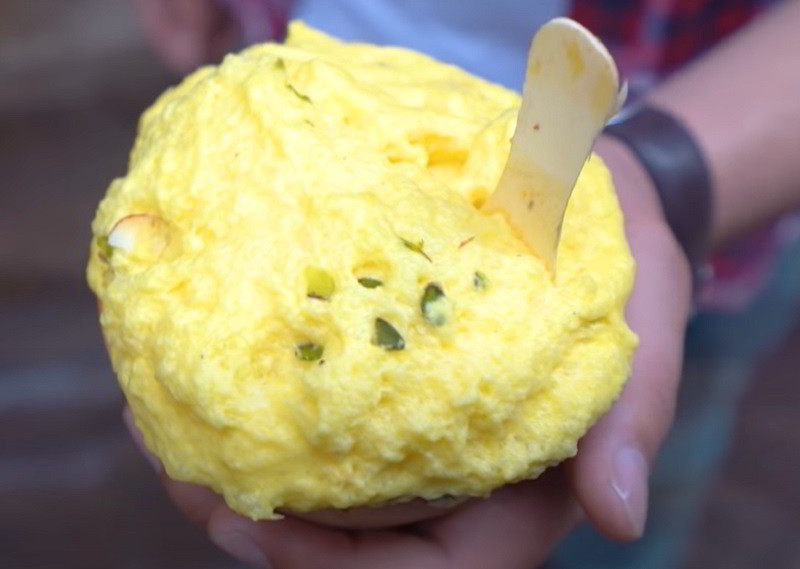
Makhan Malai, a delightful sweet snack made from milk cream, is a cherished winter treat, particularly popular in Uttar Pradesh, especially in cities like Lucknow, Kanpur and Varanasi. A similar version known as Daulat ki Chaat is enjoyed in Delhi.
The preparation of Makhan Malai is a labor-intensive process that begins a day before serving. Cow milk is boiled in a large cauldron, and fresh cream is added before boiling again. The mixture is then allowed to cool under the open sky, exposed to dew for several hours, a crucial step that imparts its unique flavor. This step is only possible during the cooler winter months.
The following morning, the dew-exposed milk is churned for three hours, resulting in a fluffy and creamy texture. Powdered sugar, cardamom powder, and yellow color are added to enhance the flavor. Despite its time-consuming preparation, Makhan Malai is a beloved winter delicacy, appreciated for its rich taste and unique culinary tradition.
Panjiri
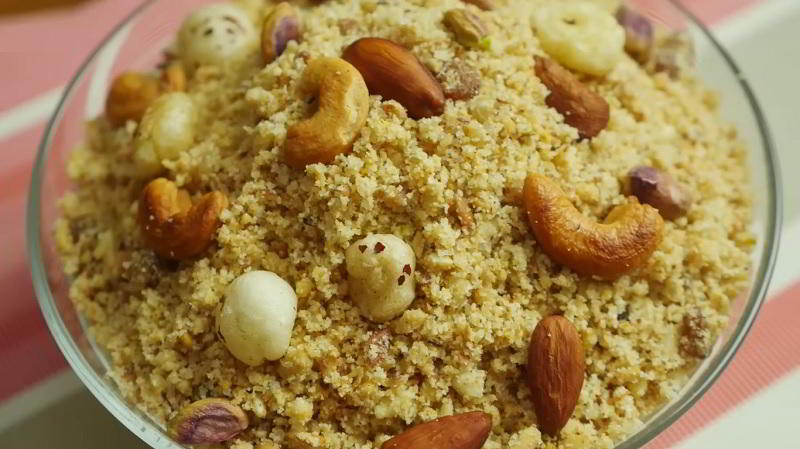
Panjiri, a traditional sweet dish from the Indian subcontinent, holds special significance during the Krishna Janmashtami festival and is rooted in Ayurvedic traditions. Originating from an Ayurvedic preparation called Panchajīraka, panjiri is a nutritious delicacy made by roasting wheat flour in ghee and combining it with dry fruits and spices such as coriander, fennel, dry ginger powder, and cumin.
The process of preparing panjiri involves carefully roasting the wheat flour in ghee until it reaches a golden brown color, imparting a rich aroma to the dish. The addition of various dry fruits adds texture and flavor, making it a delectable treat enjoyed during festive occasions.
Panjiri comes in various regional variations, each with its unique twist and flavor profile. From Dogra sund panjiri to Mathura's panchamrit panjiri and Rajasthani gond panjiri, each variation offers a distinct culinary experience, reflecting the diverse cultural heritage of the Indian subcontinent.
Baingan Bharta

Baigan bharta, also known as Baigan Chokha, is a flavorful Indian dish renowned for its smoky taste and rich blend of ingredients. The preparation involves grilling eggplant over charcoal or direct fire, infusing it with a distinctive smoky flavor. The grilled eggplant is then minced and mixed with cooked chopped tomato, cumin, chili pepper, fresh cilantro (coriander leaves), browned onion, ginger, garlic, and mustard oil or a neutral vegetable oil.
This hearty dish is commonly enjoyed with flatbread such as roti or paratha, complementing its robust flavors. Additionally, it pairs well with rice or raita, a yogurt salad, enhancing the dining experience with a variety of textures and tastes. In regions like Bihar and Uttar Pradesh, baigan bharta is served hot alongside litti or baati, adding regional nuances to its culinary presentation. Baigan bharta stands as a testament to the diverse and vibrant flavors found within Indian cuisine, celebrated for its comforting and aromatic appeal.
Pasanda
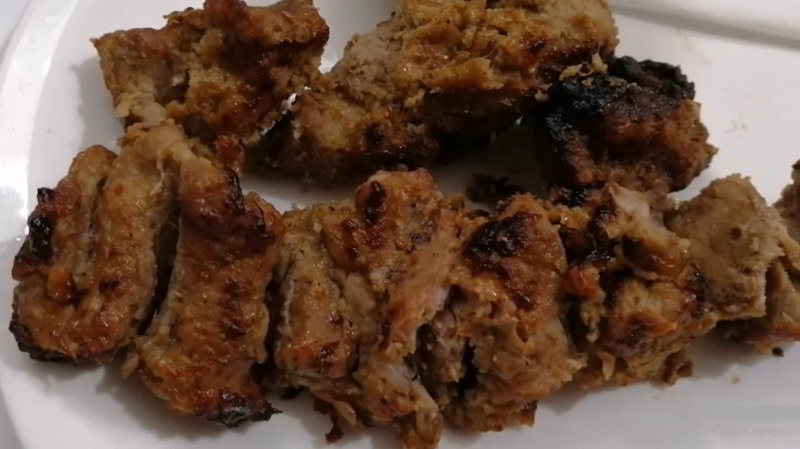
Pasanda, a beloved dish from the Indian subcontinent, derives its name from the Hindi-Urdu word "pasande," meaning "favorite," highlighting its popularity among connoisseurs. Originally crafted with prime cuts of meat such as leg of goat or lamb, flattened into strips, marinated, and fried, pasanda has evolved to include variations featuring chicken and king prawns.
The preparation process begins with the meat being cut and flattened before being immersed in a tantalizing marinade comprising yogurt, chili powder, and an array of spices like cardamom, cumin, peppercorn, and garlic. After marinating for several hours, the meat is cooked alongside coriander, chilies, onions, and occasionally cinnamon or black pepper. This fusion of flavors creates the rich and aromatic pasanda sauce.
Garnished with tomatoes or almonds, known as badaam pasanda, the dish is often served alongside fragrant white rice or warm naan bread, providing a satisfying culinary experience that tantalizes the taste buds with each savory bite.
Makki ki Roti
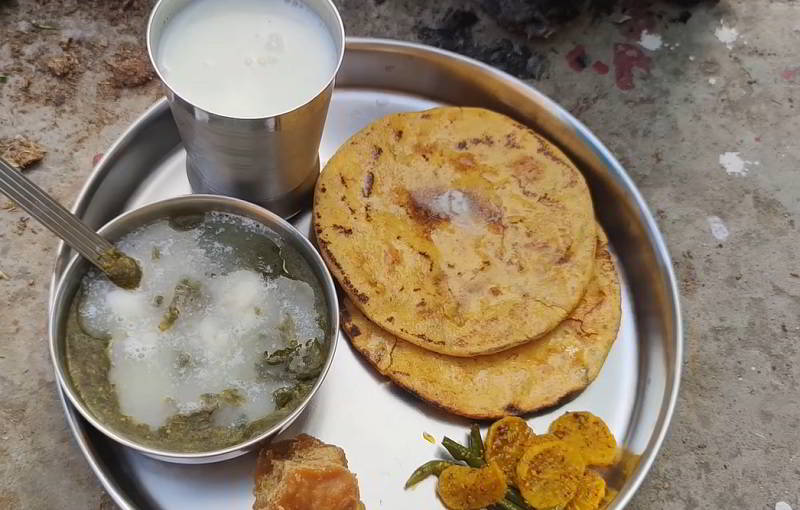
Makki ki roti is a traditional flatbread originating from the Indian subcontinent, crafted from maize flour, giving it a distinctive yellow hue. Due to its composition, makki ki roti has a crumbly texture and lacks the cohesive strength of wheat-based rotis, making it somewhat challenging to handle during preparation.
Despite its delicate nature, makki ki roti is prized for its unique flavor and versatility. It is commonly paired with hearty winter dishes centered around leafy greens, such as sarson ka saag (mustard greens) and channa ka saag (chickpea greens). The robust and earthy flavors of these dishes complement the subtle sweetness of the maize flour, creating a harmonious blend of tastes and textures that is both comforting and satisfying.
Whether enjoyed as part of a traditional winter meal or served alongside other savory dishes, makki ki roti remains a beloved staple in the culinary landscape of the Indian subcontinent, cherished for its rustic charm and wholesome goodness.
Puri Bhaji
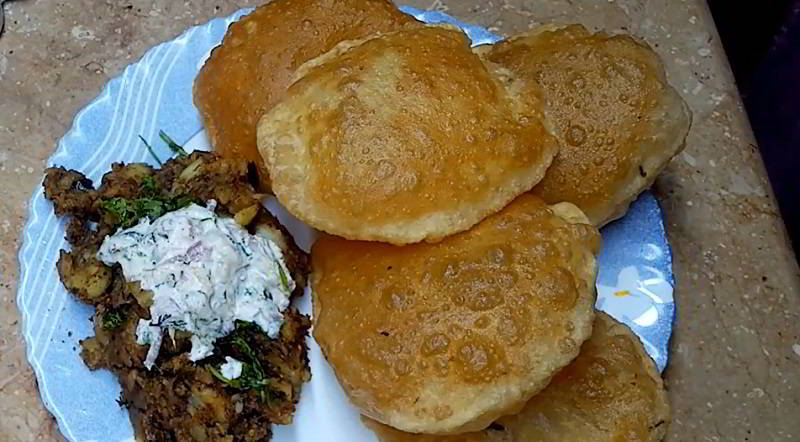
Puri bhaji, hailing from the Indian subcontinent, brings together two essential elements: puri, fried rounds of flour, and aloo bhaji, a flavorful spiced potato preparation that can be served dry or in a curry form. Traditionally enjoyed as a breakfast dish in North India, puri bhaji holds a cherished place in many households across the region, often preferred over cereals for its flavorful appeal.
This vegetarian delight is not limited to breakfast; some households serve it for lunch alongside accompaniments like dahi (yogurt) and salad. In central India, puri bhaji finds its place as a popular street snack, favored for its affordability and taste. The dish's accessibility extends to railway platforms, where it's a common sight, often served as a packed lunch option on trains along with pickle.
Puri bhaji's versatility is further showcased when paired with Lapsi, offering a satisfying and wholesome culinary experience that resonates with both locals and visitors alike, capturing the essence of Indian comfort food culture.
Aam Panna
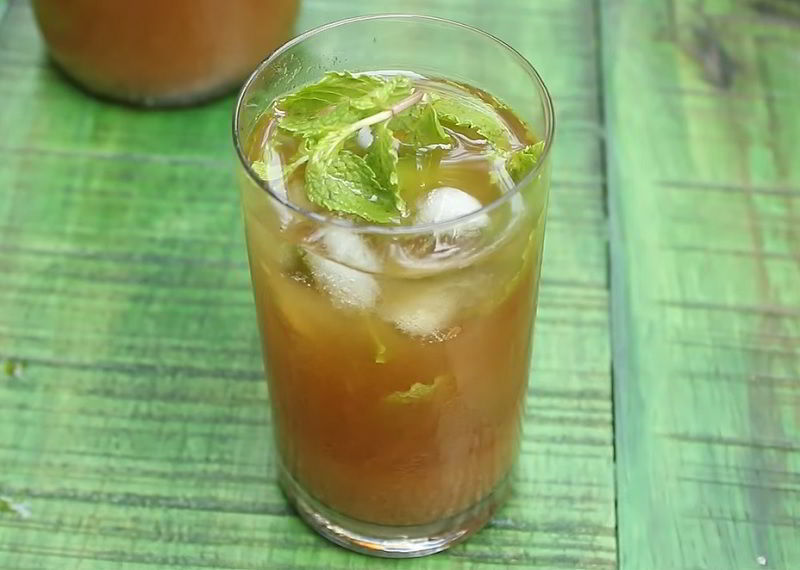
Aam panna, also known as Aam Jhora, is an Indian beverage crafted from unripe mangoes, imbued with a vibrant yellow to light green hue. Infused with mint leaves, it gains an additional touch of freshness and a vivid green color.
Rich in pectin, unripe mangoes possess a tangy flavor due to citric, oxalic, and malic acids. This refreshing drink, prepared with raw mangoes, cumin, and assorted spices, not only quenches thirst but also replenishes lost sodium chloride and iron during hot summer months, combating excessive sweating.
Popular in North India, aam panna is lauded for its digestive benefits, believed to alleviate gastrointestinal ailments. Furthermore, it serves as a potent source of essential vitamins including B1, B2, niacin, and vitamin C. In Indian tradition, it is revered as a tonic, fostering resilience against maladies such as cholera, tuberculosis, anemia, and dysentery.
Allahabadi Cake
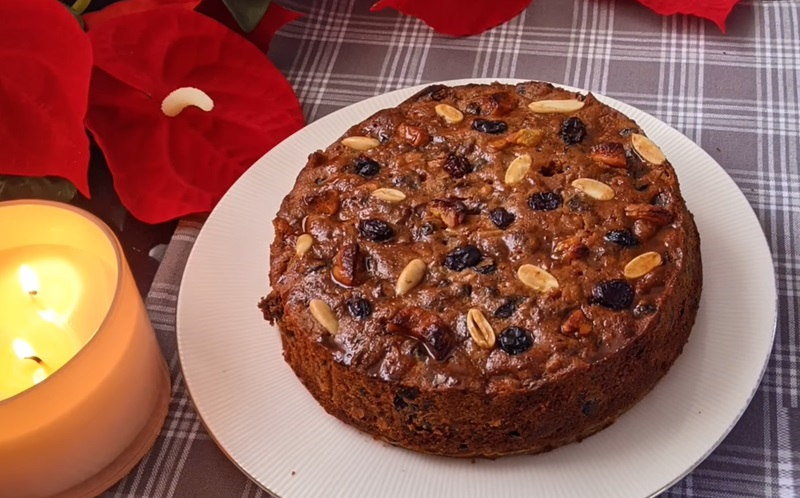
Allahabadi cake, originating from the northern Indian city of Allahabad, is a traditional Indian rum fruit cake steeped in festive charm. Popularly savored during Christmastide, it holds a cherished place among India's Christian community.
Crafted with meticulous care, Allahabadi cake boasts a rich blend of ingredients, including maida, eggs, clarified butter, marmalade, ginger, nuts, sugar, petha, and fennel. Notably, dry fruits and nuts are meticulously soaked in rum, infusing the cake with a tantalizing depth of flavor and aroma.
This delectable confection reflects the culinary heritage of India, marrying indigenous ingredients with global influences to create a delightful treat enjoyed by many during the holiday season. With its warm spices, fragrant aroma, and luscious texture, Allahabadi cake embodies the spirit of joy and celebration, making it a beloved indulgence for families and friends to relish together.
Kanji
-1709172985.jpg)
Kanji, a traditional fermented drink originating from the Indian subcontinent, holds a special place in the hearts and palates of celebrants during the vibrant festival of Holi. Crafted with a medley of ingredients including water, mustard seeds, black carrots, beetroot, and heeng, Kanji offers a unique blend of flavors and nutritional benefits.
This tangy beverage undergoes a natural fermentation process, imbuing it with probiotic goodness and a distinctive taste profile. It's not just a refreshing drink; Kanji is also renowned for its antioxidant properties, contributing to overall health and well-being.
Often served with a sprinkle of boondi on top, Kanji delights the senses with its vibrant color, zesty aroma, and refreshing tang. Whether enjoyed as a festive indulgence or as a refreshing beverage on any occasion, Kanji remains a beloved part of Indian culinary traditions, symbolizing the joy and vibrancy of festivals and bringing people together in celebration.
Sooth
-1709173231.jpg)
Saunth, also known as sooth, is a delectable sweet chutney cherished in Indian cuisine, particularly as a key ingredient in chaats. This flavorsome condiment derives its distinctive taste from a blend of dried ginger (sooth) and tamarind (imli) paste, giving it a unique balance of sweetness and tanginess. Characterized by its rich brownish-red hue, Saunth adds depth and complexity to various chaat dishes.
While modern versions may incorporate dates for sweetness, traditional Saunth made with dried ginger remains a beloved choice, especially in North India, for its robust and aromatic flavor profile. Whether drizzled over crispy samosas, papdi chaat, or dahi vada, Saunth elevates the taste experience with its harmonious blend of sweet and sour notes.
With its roots deeply embedded in Indian culinary heritage, Saunth continues to captivate taste buds and enhance the flavors of beloved street food delights, making it an indispensable element in the vibrant tapestry of Indian chaats.





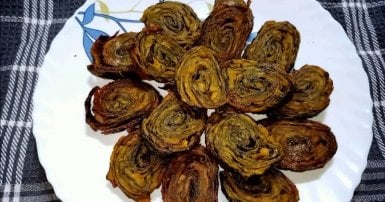
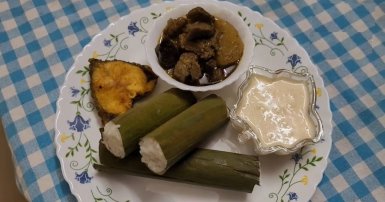
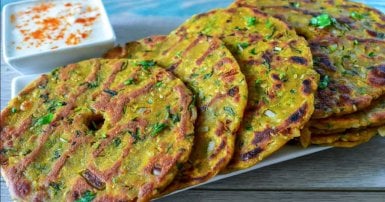
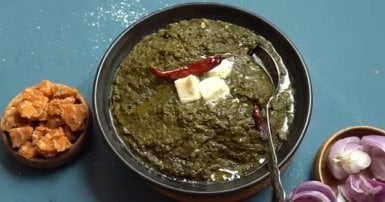
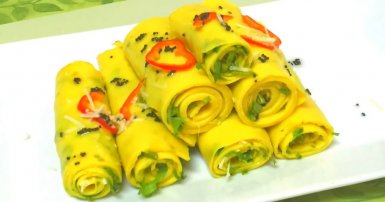
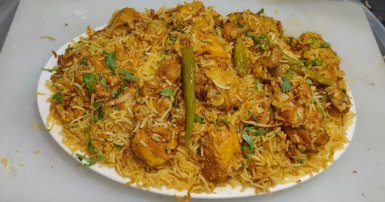
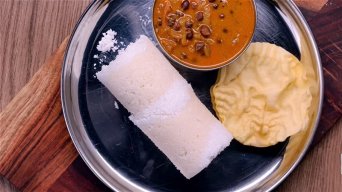
-1709813013.jpg)



